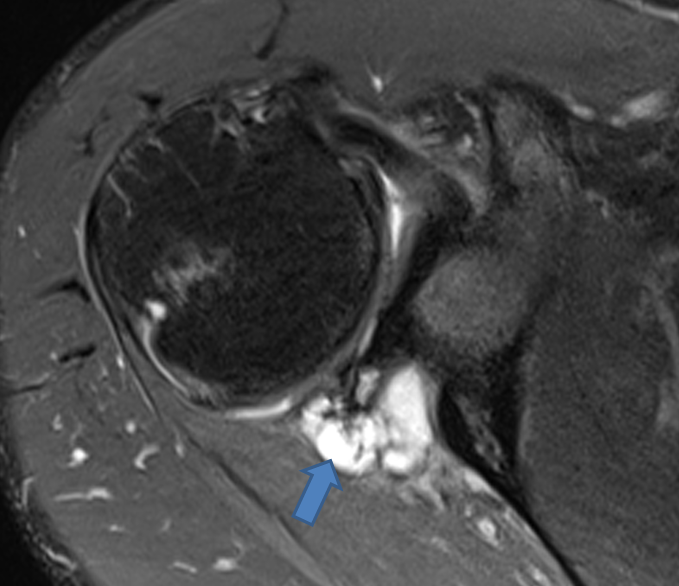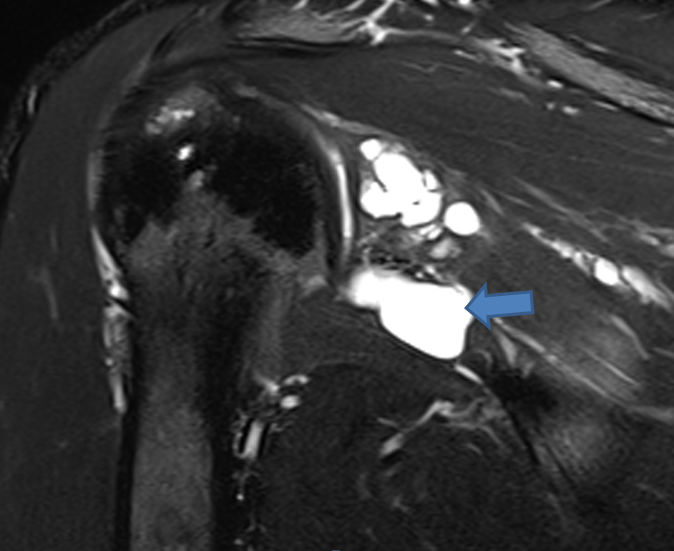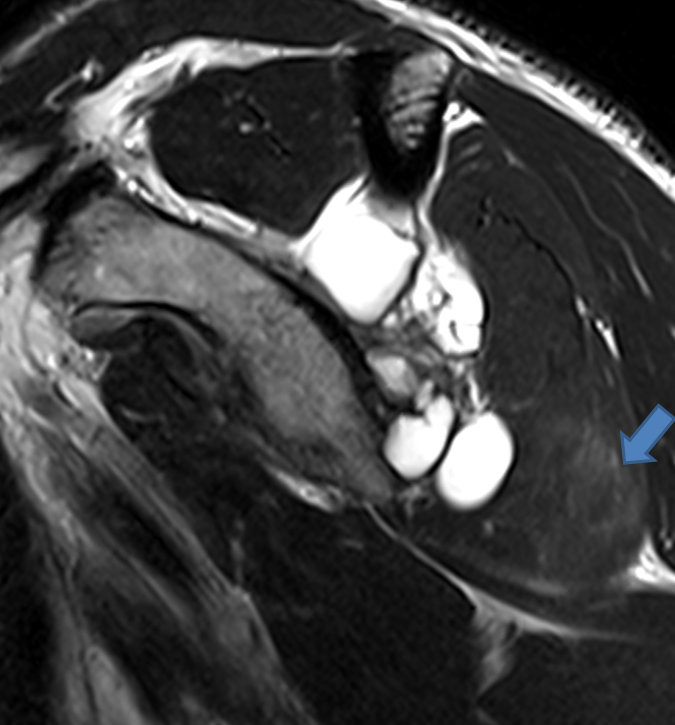Radsource radiologists are constantly communicating and sharing knowledge with each other. In our blog series Today’s Interesting Case, our team will post notable cases and images for discussion from time to time.
A 48 year-old male reports loss of strength in the right arm and shoulder pain since a hockey injury.

A fat-suppressed proton-density weighted axial image of the shoulder demonstrates a posterior labral tear with a large associated paralabral cyst (arrow).

The fat-suppressed T2-weighted coronal oblique view reveals that the inferior component of the cyst (arrow) extends into the quadrilateral space.

The T2-weighted sagittal image confirms the extensive cyst and also reveals intramuscular edema within the teres minor (arrow).
This case is an interesting example of axillary nerve entrapment secondary to a large paralabral cyst entering the quadrilateral space. Resultant denervation edema of the teres minor is apparent. Teres minor edema and/or atrophy is not uncommon at the shoulder, and the current thinking is that the majority of cases are due to injury to the teres minor branch of the axillary nerve secondary to glenohumeral instability. In rare cases such as this one, a space-occupying lesion causing axillary nerve entrapment can be identified on MRI. For more on this topic, see Dr. Michael Stadnick’s web clinic on Suprascapular Nerve Entrapment.
